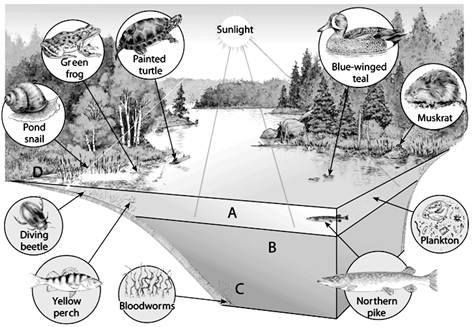Calculate the noon Sun angle for the following locations for the solstices and the equinoxes (March 20 or September 22, June 20, and December 21). Then, use the following graphs with your protractor to draw a side view of the noon Sun angle for each of the two solstices and one of the equinoxes. The graph for La Ronge, Saskatchewan is drawn for you and is shown with a protractor. If needed, refer to the analemma to determine the Sun’s declination on these dates for each of the four locations.
a) Arctic Circle (66.5°N)
June solstice:
December solstice:
Equinoxes:
b) La Ronge, Saskatchewan (55°N)—completed for you
June solstice:
December solstice:
Equinoxes:
c) Atlanta, Georgia (34°N)
June solstice:
December solstice:
Equinoxes:
d) Equator (0.0°)
June solstice:
December solstice:
Equinoxes:
e) Tropic of Capricorn (23.5°S)
June solstice:
December solstice:
Equinoxes:
f) Dunedin, New Zealand (46°S).
June solstice:
December solstice:
Equinoxes:
a) Arctic Circle (66.5°N)
June solstice: 47°
December solstice: 0°
Equinoxes: 23.5°
b) La Ronge, Saskatchewan (55°N)—completed for you
June solstice: 58.5°
December solstice: 11.5
Equinoxes: 35.0
c) Atlanta, Georgia (34°N)
June solstice: 79.5°
December solstice: 32.5°
Equinoxes: 56°
d) Equator (0.0°)
June solstice: 66.5°
December solstice: 66.5°
Equinoxes: 90°
e) Tropic of Capricorn (23.5°S)
June solstice: 43°
December solstice: 90°
Equinoxes: 66.5°
f) Dunedin, New Zealand (46°S).
June solstice: 20.5°
December solstice: 67.5°
Equinoxes: 44°



You might also like to view...
Labeling
A. On the accompanying temperate-zone lake, choose the zone of open water where photosynthesis can occur. B. C. On the accompanying temperate-zone lake, choose the zone primarily inhabited by invertebrates, such as decomposers, that can live in the low oxygen.
If you remove two protons and two neutrons from a gold atom (Au), what new element is formed (if any)?
A. Ir B. Au-2 C. Au D. Re E. Tl
The center from which a culture trait diffuses is called a cultural hearth.
Answer the following statement true (T) or false (F)
Nautiluses, octopuses, and squid belong to which class?
a. Cephalopoda b. Bivalia c. Gastropoda d. Mollusca e. Crustacea